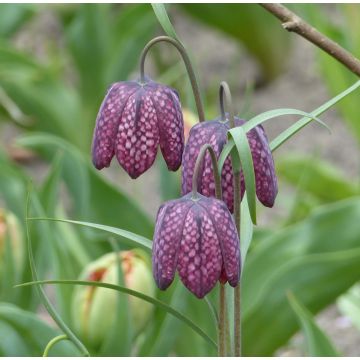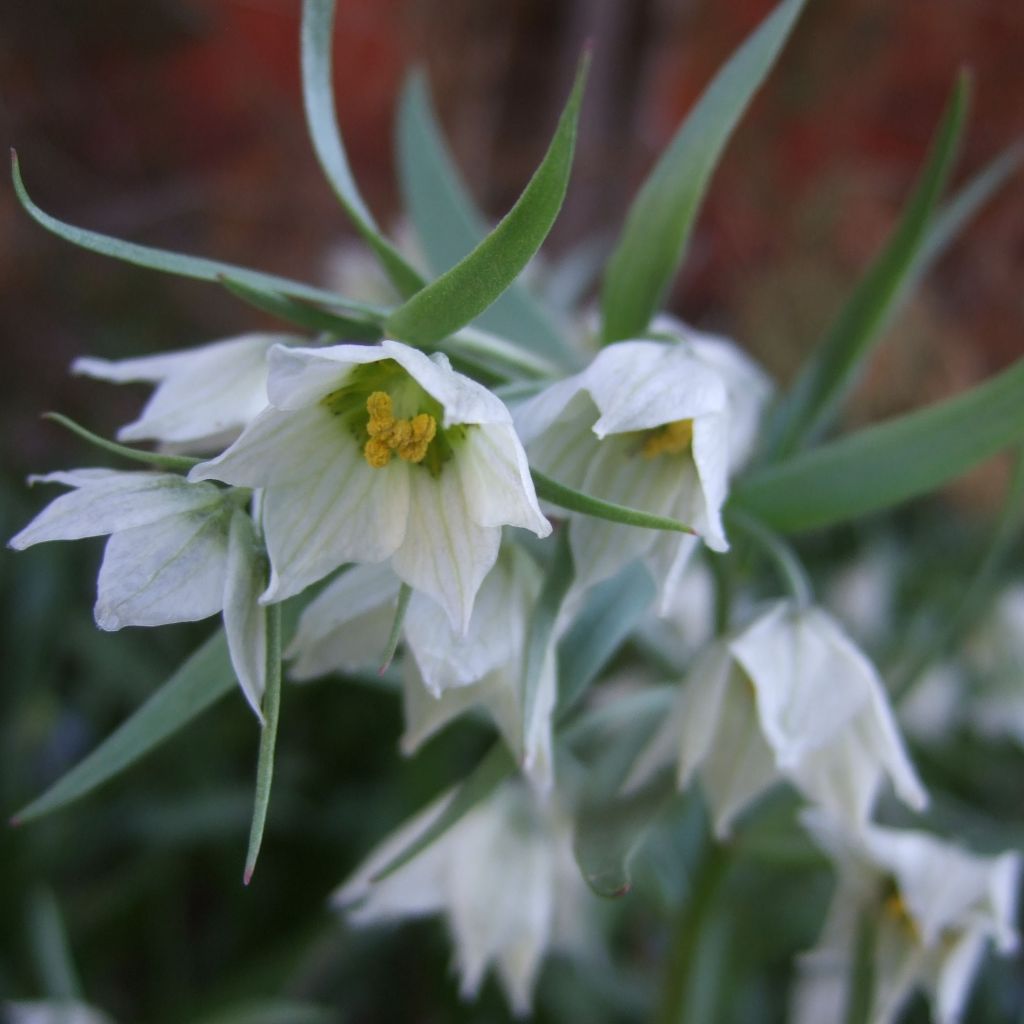

Fritillaria bucharica - Fritillaire blanche d'Asie
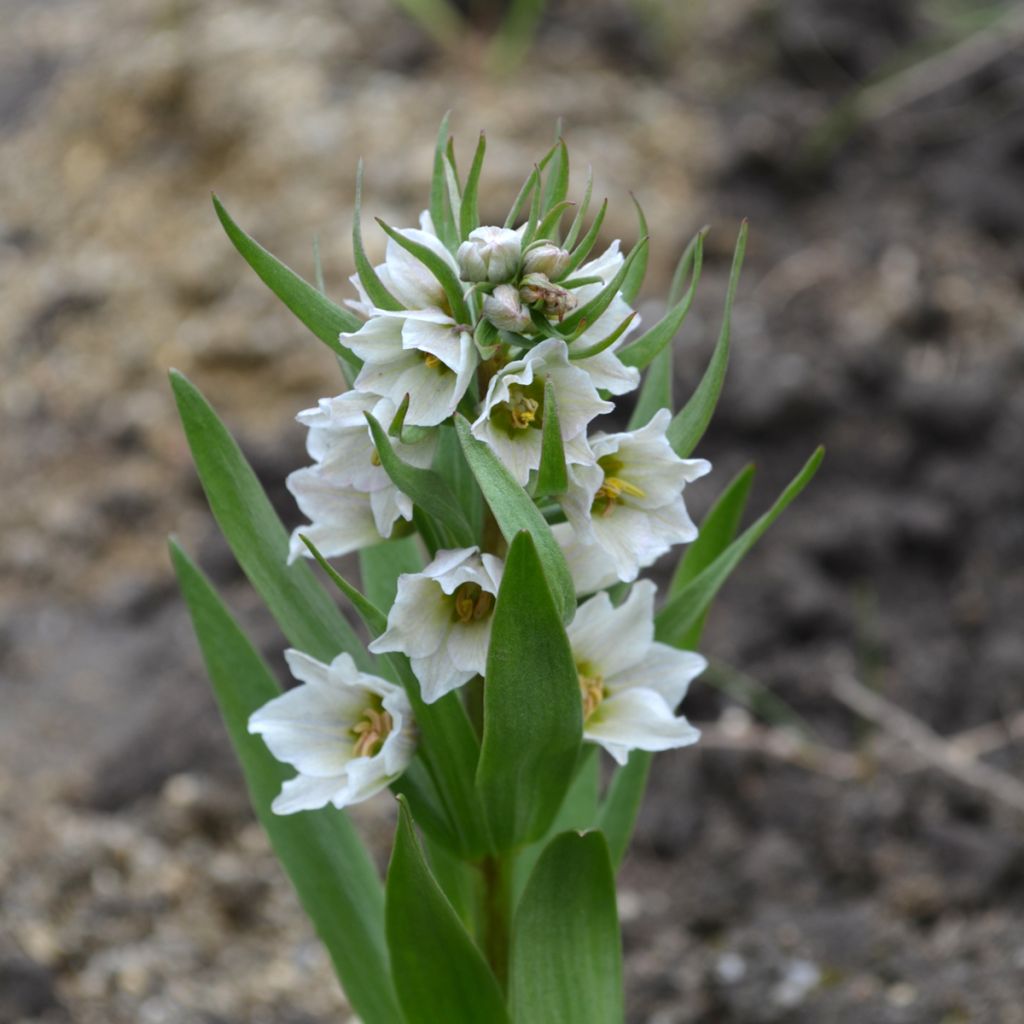

Fritillaraire bucharica
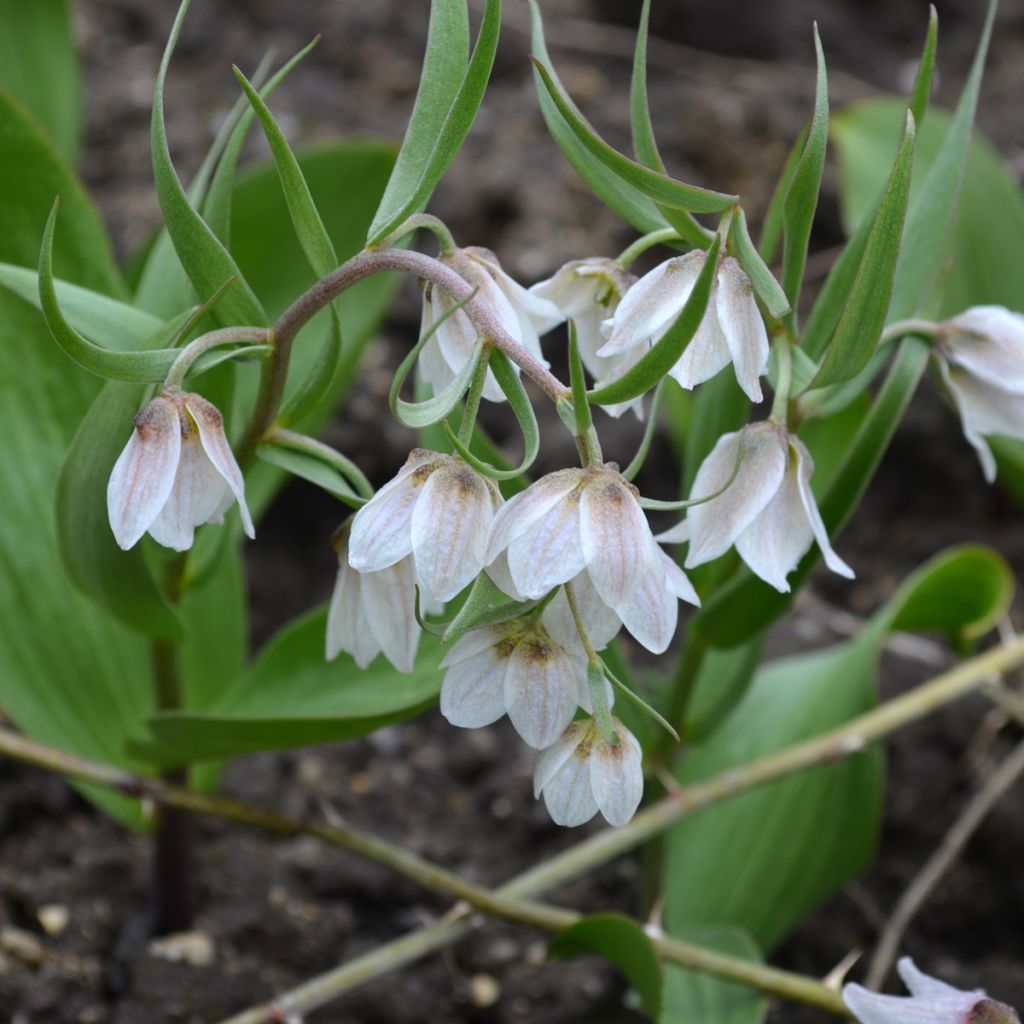

Fritillaraire bucharica
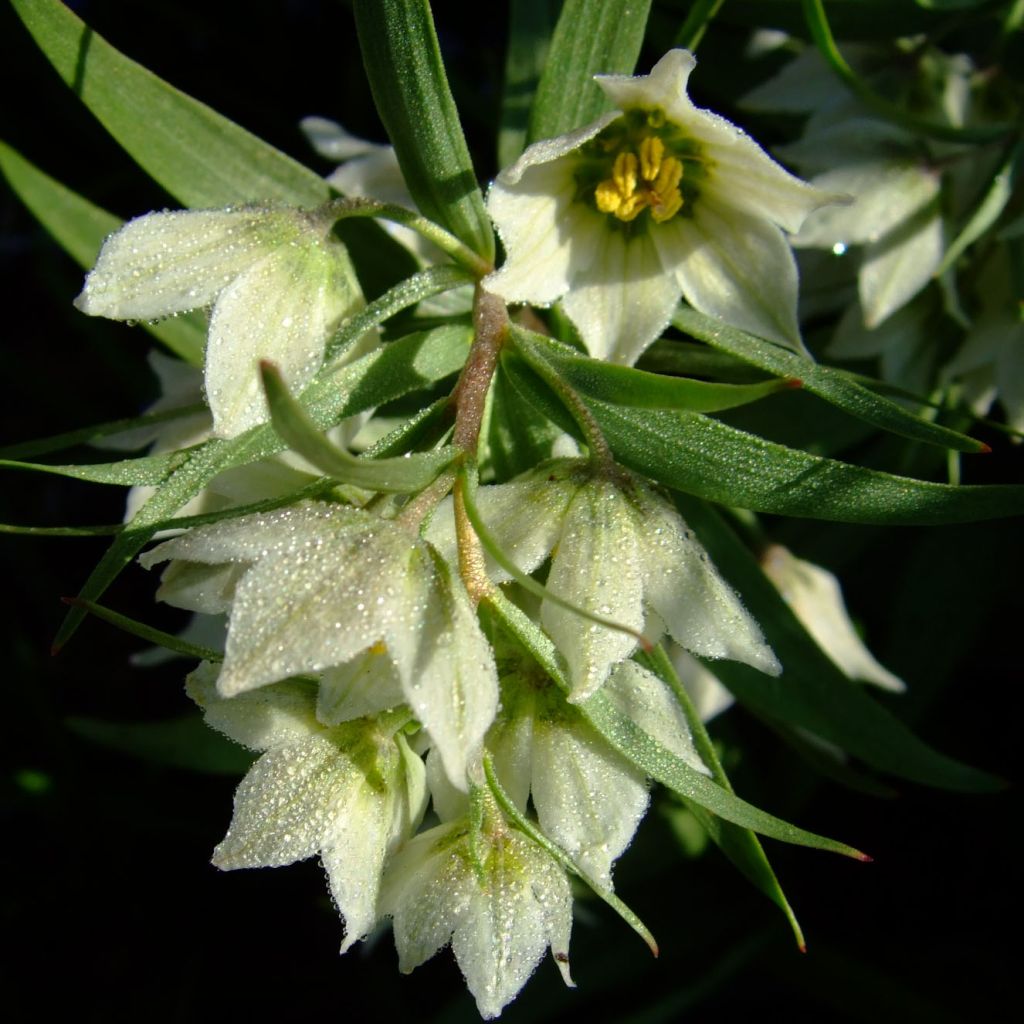

Fritillaria bucharica - Fritillaire blanche d'Asie
Fritillaria bucharica
Fritillaria bucharica
Buchara Fritillary
I hope she will multiply.
ANNE B., 26/04/2017
This plant carries a 6 months recovery warranty
More information
We guarantee the quality of our plants for a full growing cycle, and will replace at our expense any plant that fails to recover under normal climatic and planting conditions.
From €5.90 for pickup delivery and €6.90 for home delivery
Express home delivery from €8.90.
Does this plant fit my garden?
Set up your Plantfit profile →
Description
Rare and mysterious, this fritillary or Frillaria bucharica is a montane bulbous plant found in rocky terrains, producing early in spring striking flowering stems adorned with star-shaped flowers, white-silver with a green throat, emerging from large grey-green, rough leaves. It is a perfectly hardy plant, quite easy to grow in the sun, in well-drained soil of rockeries or borders, or even in pots.
The Fritillaria bucharica is a bulbous, deciduous perennial plant of the lily family, native to earthy and rocky slopes of Afghanistan, Tajikistan, Uzbekistan, and Turkmenistan. Its bulb, with a diameter of 1 to 3 cm (0 to 1in), produces a herbaceous plant reaching 15 to 35 cm (6 to 14in) in height. The leaves are alternate, the basal ones reaching 8 cm (3in) x 4 cm (2in) and becoming smaller and elongated as they move up the sturdy and often arched stem, adorned with numerous bracts. Flowering takes place from March to May, arranged at the top of the flowering stem. The flowers, numbering from 1 to 10, are downward-facing and composed of 6 white petals, green at the base, with green veins, measuring 1.5 to 2 cm (1in) in length and 0.7 to 1 cm (0in) in diameter. The throat of the flower, like the stamens, is distinctly green.
This Asian fritillary is a plant that will pique the curiosity of gardeners who love rare plants, but also a star of spring. It can be used in well-drained flowerbeds or rockeries, for example, in the company of plants originating, like it, from the mountainous regions of Central Asia; numerous botanical tulips, astragalus, yarrows, geraniums, or the perennial Geranium rotondifolium. It also thrives very well in pots, in well-drained substrate, protected from winter humidity.
.
Report an error about the product description
Fritillaria bucharica in pictures
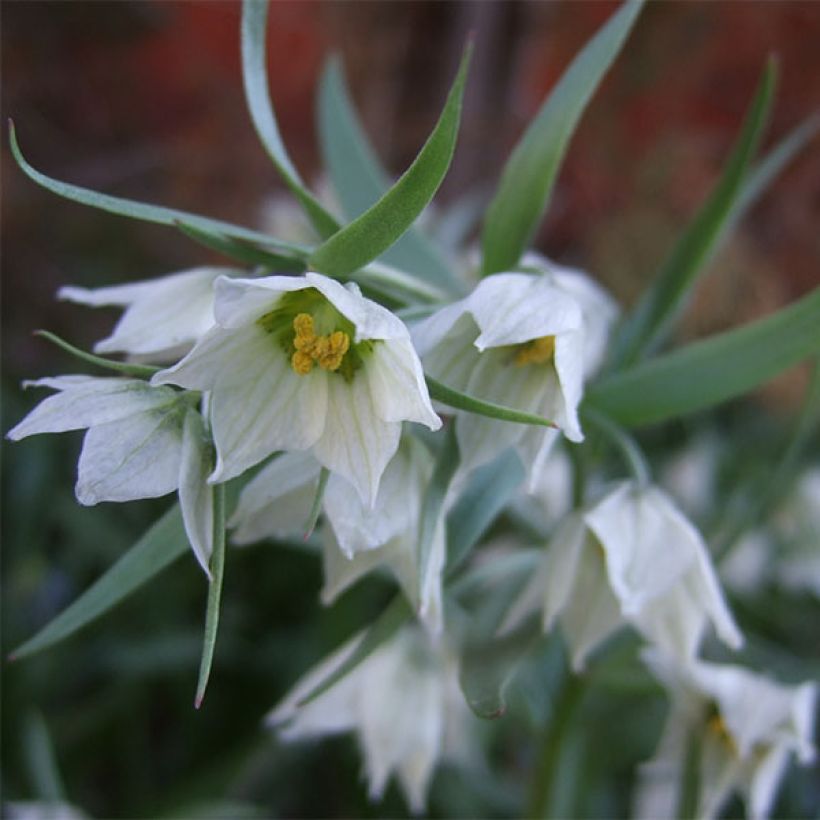

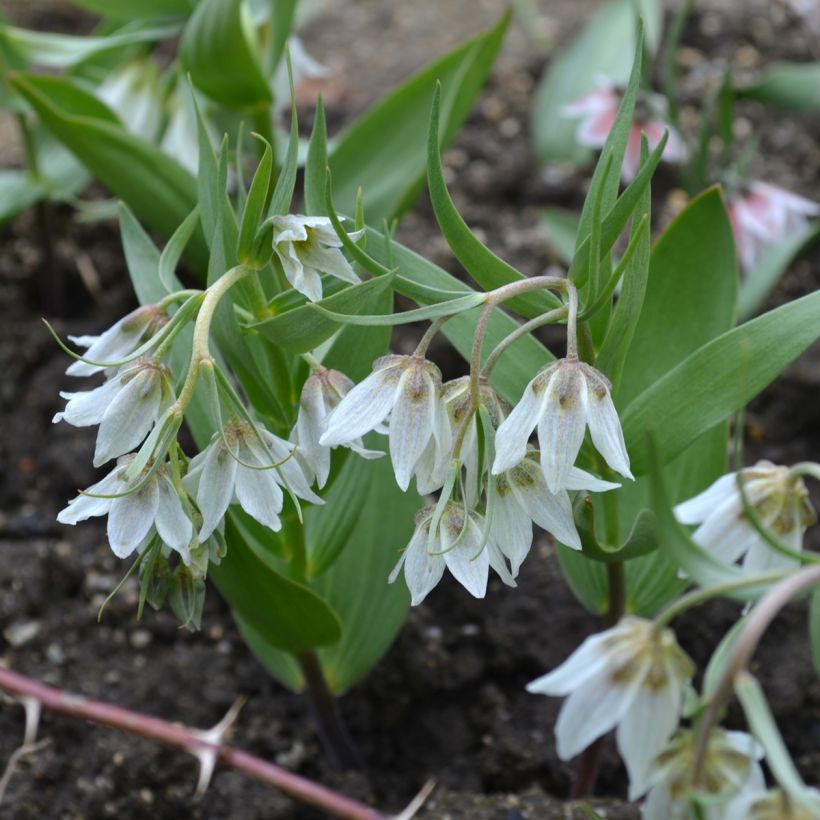

Plant habit
Flowering
Foliage
Botanical data
Fritillaria
bucharica
Liliaceae
Buchara Fritillary
Central Asia
Other Fritillaria
Planting and care
The Fritillaria bucharica thrives in full sun, in a light, even sandy or loamy, very well-drained soil. It ideally thrives in a continental climate where winters and summers are dry and springs are humid. Plant it in a rather fertile soil. Absolutely avoid heavy soil as it may lead to the appearance of fungi. If drainage is insufficient and winters are very humid, this fritillary may rot. Plant it in a raised bed or rockery from September to October, adding sand, gravel or pumice to the planting hole. Place the bulb at a depth of 10 cm (4in). In winter, we recommend mulching or covering the fritillary to protect it from heavy rains. Remove faded flowers if you don't want it to self-seed.
Planting period
Intended location
Care
-
, onOrder confirmed
Reply from on Promesse de fleurs
Haven't found what you were looking for?
Hardiness is the lowest winter temperature a plant can endure without suffering serious damage or even dying. However, hardiness is affected by location (a sheltered area, such as a patio), protection (winter cover) and soil type (hardiness is improved by well-drained soil).

Photo Sharing Terms & Conditions
In order to encourage gardeners to interact and share their experiences, Promesse de fleurs offers various media enabling content to be uploaded onto its Site - in particular via the ‘Photo sharing’ module.
The User agrees to refrain from:
- Posting any content that is illegal, prejudicial, insulting, racist, inciteful to hatred, revisionist, contrary to public decency, that infringes on privacy or on the privacy rights of third parties, in particular the publicity rights of persons and goods, intellectual property rights, or the right to privacy.
- Submitting content on behalf of a third party;
- Impersonate the identity of a third party and/or publish any personal information about a third party;
In general, the User undertakes to refrain from any unethical behaviour.
All Content (in particular text, comments, files, images, photos, videos, creative works, etc.), which may be subject to property or intellectual property rights, image or other private rights, shall remain the property of the User, subject to the limited rights granted by the terms of the licence granted by Promesse de fleurs as stated below. Users are at liberty to publish or not to publish such Content on the Site, notably via the ‘Photo Sharing’ facility, and accept that this Content shall be made public and freely accessible, notably on the Internet.
Users further acknowledge, undertake to have ,and guarantee that they hold all necessary rights and permissions to publish such material on the Site, in particular with regard to the legislation in force pertaining to any privacy, property, intellectual property, image, or contractual rights, or rights of any other nature. By publishing such Content on the Site, Users acknowledge accepting full liability as publishers of the Content within the meaning of the law, and grant Promesse de fleurs, free of charge, an inclusive, worldwide licence for the said Content for the entire duration of its publication, including all reproduction, representation, up/downloading, displaying, performing, transmission, and storage rights.
Users also grant permission for their name to be linked to the Content and accept that this link may not always be made available.
By engaging in posting material, Users consent to their Content becoming automatically accessible on the Internet, in particular on other sites and/or blogs and/or web pages of the Promesse de fleurs site, including in particular social pages and the Promesse de fleurs catalogue.
Users may secure the removal of entrusted content free of charge by issuing a simple request via our contact form.
The flowering period indicated on our website applies to countries and regions located in USDA zone 8 (France, the United Kingdom, Ireland, the Netherlands, etc.)
It will vary according to where you live:
- In zones 9 to 10 (Italy, Spain, Greece, etc.), flowering will occur about 2 to 4 weeks earlier.
- In zones 6 to 7 (Germany, Poland, Slovenia, and lower mountainous regions), flowering will be delayed by 2 to 3 weeks.
- In zone 5 (Central Europe, Scandinavia), blooming will be delayed by 3 to 5 weeks.
In temperate climates, pruning of spring-flowering shrubs (forsythia, spireas, etc.) should be done just after flowering.
Pruning of summer-flowering shrubs (Indian Lilac, Perovskia, etc.) can be done in winter or spring.
In cold regions as well as with frost-sensitive plants, avoid pruning too early when severe frosts may still occur.
The planting period indicated on our website applies to countries and regions located in USDA zone 8 (France, United Kingdom, Ireland, Netherlands).
It will vary according to where you live:
- In Mediterranean zones (Marseille, Madrid, Milan, etc.), autumn and winter are the best planting periods.
- In continental zones (Strasbourg, Munich, Vienna, etc.), delay planting by 2 to 3 weeks in spring and bring it forward by 2 to 4 weeks in autumn.
- In mountainous regions (the Alps, Pyrenees, Carpathians, etc.), it is best to plant in late spring (May-June) or late summer (August-September).
The harvesting period indicated on our website applies to countries and regions in USDA zone 8 (France, England, Ireland, the Netherlands).
In colder areas (Scandinavia, Poland, Austria...) fruit and vegetable harvests are likely to be delayed by 3-4 weeks.
In warmer areas (Italy, Spain, Greece, etc.), harvesting will probably take place earlier, depending on weather conditions.
The sowing periods indicated on our website apply to countries and regions within USDA Zone 8 (France, UK, Ireland, Netherlands).
In colder areas (Scandinavia, Poland, Austria...), delay any outdoor sowing by 3-4 weeks, or sow under glass.
In warmer climes (Italy, Spain, Greece, etc.), bring outdoor sowing forward by a few weeks.

































